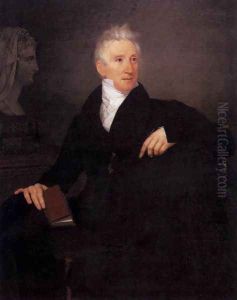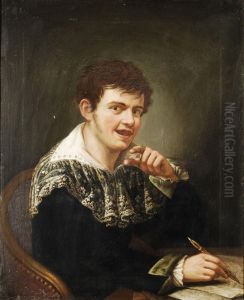Ludovico Lipparini Paintings
Ludovico Lipparini was an Italian painter, active during a period of significant political and cultural changes in the 19th century. Born in Bologna in 1800, he was part of the Bolognese school of painting, which maintained a strong tradition of academic painting while also beginning to absorb the influences of Romanticism.
Lipparini received his initial training at the Accademia di Belle Arti di Bologna, which was one of the main centers of art education in Italy during the time. Under the tutelage of accomplished artists, he developed a style that combined the precision and clarity of neoclassical art with a growing interest in the emotional and picturesque aspects that would characterize Romantic art.
Throughout his career, Lipparini produced works that included historical scenes, allegories, and portraits. He was particularly known for his ability to render the human figure with elegance and expressiveness. In addition to painting, he also engaged in teaching, influencing a new generation of artists and contributing to the evolution of the Bolognese school.
Lipparini's work was appreciated during his lifetime, and he received commissions from various patrons, which included religious institutions and members of the nobility. His art was characterized by dramatic lighting, strong color contrasts, and a focus on dramatic moments and characters, which reflected the shifting tastes of the era.
Ludovico Lipparini died in 1856. Although not as widely known today as some of his contemporaries, his work remains an important example of the transition from Neoclassicism to Romanticism in Italian art. His paintings are part of several collections and can be seen in museums and galleries specializing in 19th-century European art.

